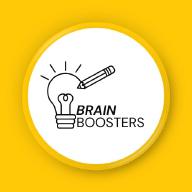What’s covered (at a glance)#
At Key Stage 4 (Years 10–11), science builds on KS3 with a balanced programme across biology, chemistry and physics, underpinned by mathematical skills and working scientifically (planning enquiries, collecting/analysing data, evaluating evidence). (GOV.UK)
Biology – big ideas and typical topics include:
- Cell biology (cells, enzymes, respiration, biological molecules)
- Transport systems (circulatory and plant transport)
- Health, disease & medicines (pathogens, immunity, prevention)
- Coordination & control (nervous/hormonal systems, homeostasis)
- Photosynthesis (process and factors)
- Ecosystems (interdependence, biodiversity, cycling of materials, human impacts) (GOV.UK)
Chemistry – structure, materials and Earth systems:
- Atomic structure & the Periodic Table
- Structure, bonding & properties of matter (ionic/covalent/metallic; intermolecular forces; carbon structures)
- Earth & atmospheric science (composition, climate evidence/uncertainties, pollutants, water resources) (GOV.UK)
Physics – models, quantities and real-world applications:
- Energy (changes, stores, calculations)
- Electricity (circuits, charge, mains safety; power transfer)
- Magnetism & electromagnetism (fields, solenoids, transformers/National Grid)
- The structure of matter (states, particle motion, specific heat/latent heat, gas pressure–temperature links)
- Atomic structure (nuclear model, isotopes, ionising radiation, half-life, fission/fusion)
- Space physics (solar system overview) (GOV.UK)
In KS4, working scientifically is taught through the subject content, with maths used in context (units, graphs, analysis). (GOV.UK)
Common sticky spots#
- Experimental design & variables (fair tests, sampling, reliability vs validity)
- Multi-step calculations with units/standard form; converting and rearranging equations
- Graphs & data (choosing the right representation, interpreting gradients/intercepts, uncertainty)
- Linking models to observations (particle model, energy stores vs transfers, circuit behaviour)
- Extended responses (using precise scientific vocabulary to explain cause–effect)
How I support your child#
- Diagnostic → tailored plan: quick baseline to target priority gaps and map deadlines.
- Hands-on practicals, safely: clear routines for planning, measuring, recording and evaluating—always tied to “working scientifically.” (GOV.UK)
- Maths-in-science boosters: units, significant figures, ratios/percentages, and confident graph work.
- Model–explain–apply: concise teaching with worked examples, then guided practice and retrieval to make learning stick.
- Exam-ready communication: sentence stems and structures for clear, evidence-based answers.
- Parent updates: short notes and purposeful home tasks to keep momentum between sessions.
